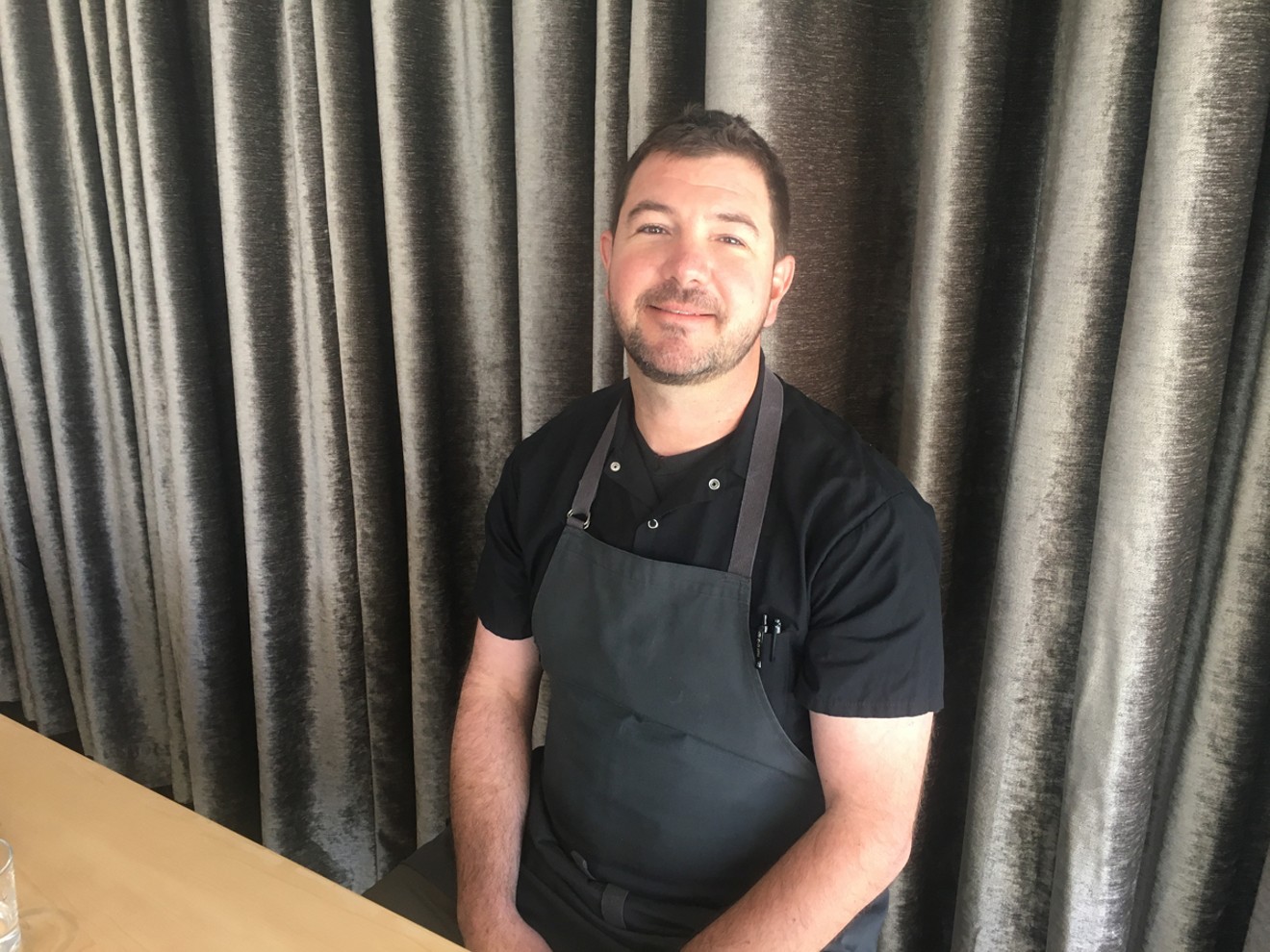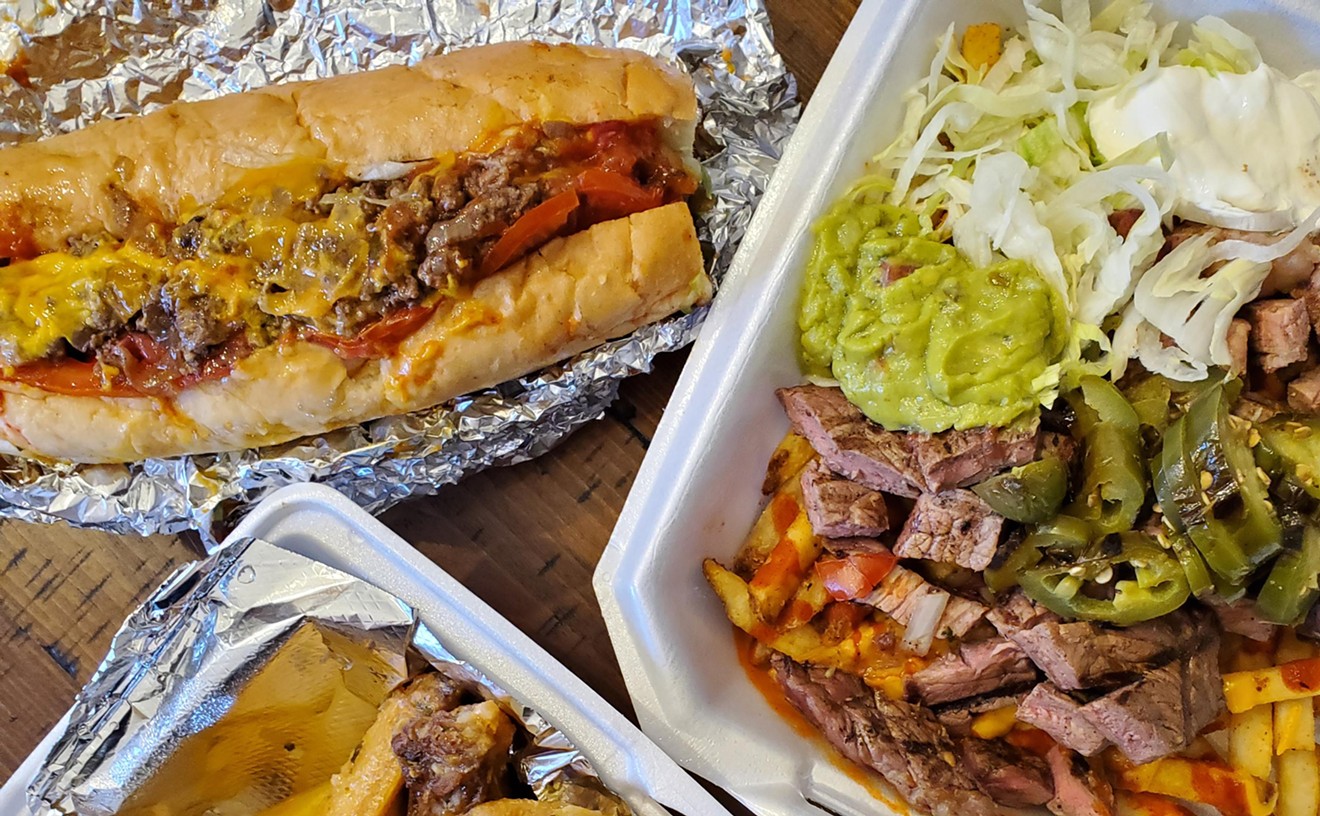Westword: You grew up in California, during a time when California cuisine was having a major impact on the national food conversation. Was there a particular experience that launched you into this field?
Christian Graves: I grew up in the Bay Area, outside of Berkeley. My folks used to take me to this place in the city called Roti; it had an open-fire grill and ended up being a lot of the inspiration for [Citizen Rail]. I thought it was so cool. They had this open kitchen, a big table in the middle of the dining room, and they did rotisserie chicken, and it was so good. Even as a kid, I was like, this is pretty fucking rad. You could sit at the chef’s counter, where there was an oyster bar, and see what was going down; it was cooler than a show. That was the place we went back to all the time. I had my first beer there at eighteen. I tried to work there right after culinary school, but they said no, so I went and worked at another place, and then went back and got a job there for two and a half years. To me, it was the ultimate — taking something boring like chicken and adding a little smoke and getting something so good. That set the hook in me.
Talk a little about the early days of your career.
I started at sixteen trying to get a job to pay for my car, gas and beer. The first guy I worked for took a shine to me. I was washing dishes for him, and he taught me more and more and more — how to bake bread, how to roast turkeys. I was on the path to go to architecture school, but it was not a good fit; I’m not built for a cubicle or office. So I dropped out of school and told my parents I was going to work in the city. They said, ‘The hell you are. You have to get some degree somewhere. We don’t care what, but figure it out.’ I realized I wanted to cook, so I went to a hotel-restaurant culinary program in Santa Barbara. As soon as I was done, I was in San Francisco applying for jobs. I got my résumé going — I got into Roti, and then I worked at Aqua, One Market and then Farallon for five years. They were great restaurants with great, passionate chefs. They’ve taken care of me. The cooking bit is a lot of mentorship. When I wanted to leave San Francisco, my chef at Farallon found me a job. He said, ‘Okay, you’re moving to San Diego.’ A month later I was in San Diego. I was there for ten years at Jsix, and then I moved out here a year ago and started a conversation with Josh Mayo, talking about Citizen Rail. I’d been trying to pitch the same concept in San Diego.
How did working in San Francisco during that era inform your own style?
At that time, there were basically two kitchens: You either came from the Alice Waters and Jeremiah Tower side of the line, or you were a Bradley Ogden/Campton Place guy; all the chefs at that time were in one of those two schools. They were both California cuisine, as in regional cooking, done at a hyper-seasonal level with fresh local produce. Where you came from dictates how you cook: It dictates how you make Hollandaise, how you make gnocchi, how a dish ends up on the plate. Is it raw? Can you put a peach on a plate and say it’s dessert? Then you came from Chez Panisse and Alice Waters. A little more manipulation is Bradley Ogden. I’m a mix of both. I worked for chefs from both of those kitchens. Back to [Citizen Rail], all of those things are part of the concept and how we got here.
So what was the vision for Citizen Rail?
We wanted a holistic restaurant with lots of capabilities. When it comes to restaurant space, square footage is what you want — you want to get as many seats in to make as much money as possible. The more you have and the more you keep full, the more money you’re going to make. So if you take space and say, I want to do a dry-aged room, a butchery room, you’re taking dollars out of that restaurant. In the restaurant business, I wholeheartedly believe you have to make money, and the margins are small. But you have to have inspiration and fire and passion. So we invested — we took square footage out for dry-aging and butchering. That’s the core. We can get in anything and manipulate it how we want to create a dish that we love. We’re creative about how we use the bits and pieces. Our philosophy is more of a farmhouse philosophy: We have one cow — how are we going to use the whole thing? That puts a lot of pressure on the meat side of it, but we’re not meat-centric. We’re doing a lot of California cuisine stuff — I’m wholeheartedly behind the vegetables.
Butchering seems a bit of a lost skill in restaurant kitchens. Why was it important to you to integrate it?
Butchering is crazy — even meat companies don’t cut a ton of meat now. The whole process of meat is really weird. The way that chicken comes wrapped in cellophane makes it feel like it’s not real food — or maybe it just doesn’t have the same soul. As far as the mechanics of butchering, all animals have similar structures, they just get bigger — the muscles get bigger. There’s a natural progression to understanding how an animal can be broken down. I have a great butcher. He comes from a commercial background, so he thinks differently than I do. He gets some different cuts, and he’s showing all of us a lot. If you go to a kill facility in Greeley, you see this assembly line of people: The cows come in, they kill them, take the skin off, and then they go on a conveyor belt, where people are breaking them down into smaller sections or pieces. It’s cool, but scary. That’s ultimately what we need to feed our society, but butchering is a lost art.
Your menu is seasonal and sustainability-focused. Has it been a challenge adjusting to Colorado after working for so long in a market where the growing season is year-round?
Yeah — I went from one extreme to another. In San Diego there are no seasons, and you get everything you want any time you want it. There are more organic farms per person there than anywhere else. The growing season is extremely short here. Farmers’ markets don’t really start until May, and that just blows my mind. It’s been an adjustment to figure that out. We end up getting a lot of stuff from California. Right now, we’re as local as possible. It’s about finding the vendors and trying to create those relationships. In San Diego, I could talk to farmers about the year and what I would like to see. Same with San Francisco. It was really cool to go to a farmer and say, I know chefs will geek out over this onion or bean. We were doing it together. I’m trying to carve out the same relationships here, but it takes time. It’s gotta be a relationship.

This roasted artichoke with Dungeness crab and fennel fronds shows that the kitchen does more than just meat.
Mark Antonation
There are a couple things happening. I always tell my cooks, if you want a sous-chef gig, you can get one. I wanted to be a sous-chef by age 24. I chased the title, got the title, then said, wait, my toolbox isn’t full. So I went back to being a line cook. I realized I needed to learn a lot more. When I stopped chasing a title, I was much happier, and I got more into the craft. So I ask my chefs, is the toolbox full? When you’re a chef, can you be as creative and free-form as you want? Can you grill, sauté and braise properly? Can you fry properly? Can you bake? People are skipping these steps. The Food Network isn’t helping that. The celebrity-chef bullshit is the worst thing that could happen to our industry. People coming out of culinary school think they’re going to be a chef, and they want to be celebrity chefs because there’s this rock-star thing, but that’s not a kitchen. Kitchens are rough — there’s passion, love and hate at the same time. It’s like a pirate ship. If you come out of culinary school and think you’re going to be on TV in a year, you shouldn’t cook. Specialize in entertainment. Chefs should be chained to their stoves. It’s a weird time. We’ve been open for a month, and I’ve already lost almost eight people.
Skipping steps makes me think of a professional apprenticeship model. What do you need to get back to that?
You need a dining public that understands, and Denver has that. And you need people who see the nobility in what they’re doing. You need chefs who are motivated, who want to teach and be motivated, who believe in passing on how to cook. I think Denver is primed for it.
Citizen Rail
1899 16th Street
303-323-0017
citizenrail.com
Hours: 6:30 to 10:30 a.m. and 2:30 to 10:30 p.m. Monday through Wednesday, 6:30 to 10:30 a.m. and 2:30 to 11 p.m. Thursday and Friday, 2:30 to 11 p.m. Saturday, 2:30 to 10:30 p.m. Sunday.













